The data conundrum: Use data more sensitively rather than intelligently, urge experts
We live in a data age today, which has started to have tremendous impact across industries – from media & entertainment to marketing, financial services, manufacturing, healthcare and more.
The session on ‘Solving the data conundrum - a priority and challenge’ at Adgully’s The Mobile Media Summit 2018 delved into the biggest priorities and challenges when it comes to building a data strategy for any digital marketing team or marketer.
The panelists included Channan Sawhney, Head of Digital Marketing - Consumer, Johnson & Johnson; Mayoori Kango, Managing Director, Performix.Resultrix; Priyanka Agrawal, Co-Founder, COO & Chief Experience Officer, Fractal Ink; Rohan Mehta, CEO, Social Kinnect; and Sandip Tarkas, Director, Songdew. Vasuta Agarwal, VP & GM - India and South Asia, InMobi, moderated the session.
Vasuta Agarwal commenced the discussions by asking the speakers to give their take on the biggest priorities and challenges in building an effective data strategy.
Channan Sawhney mentioned that coming from an FMCG background, the biggest priority is to reach the right audience at the right time with a precise message and not really spray and pray per se. “The biggest challenge today, from an FMCG perspective, is capability and that means being able to manage large amounts of data,” he maintained.
According to Mayoori Kango, the Holy Grail for all marketers is to understand the view of the customer. “As an agency that is what we want to help our client achieve. The question is what data stack we need to choose to be able to collect that information because data without structure is meaningless,” she added.
The second point is how to marry the online data with the offline data. Hence, having ID level partnerships in the offline world that can be translated in the online world is important.
The third most important part, Kango mentioned, is having the resources that can make sense of the data one is collecting that can actually impact marketers’ ongoing campaign strategy or ongoing CRM strategy.
“Those are the three things that we are grappling with as an agency,” she said.
Drawing from her experience as a design consultant, Priyanka Agrawal said that she looks at data from the point of view of two types of systems. “One is a closed system where you know the parameters you need to pursue and then there are systems where you can get ready data. For example, if you want to predict food scarcity or the weather, then these are closed systems and it is easy to get data for that. But there are open systems like ‘if I propose to a girl, will she say yes’; there is no clear data for that.”
Continuing further, Agrawal mentioned about ‘Thick Data’ that her agency uses, which gives contextual, emotional and cultural significance to data. “We use this ‘Thick Data’, which is more qualitative in nature and derive the ‘whys’ – the questions to ask from the big data which is more structured and quantitative. We use the ‘Thick Data’ to evaluate what the Big Data can do for us and then design experiences using those insights. That is the significance of data for us.”
For Rohan Mehta, the first priority is to collect and use first party data well enough. There should be good implementation to collect that data. According to him, the challenge is to manage data from disparate sources. “Currently, you will have first party data, but it is scattered in different tools, technologies and different mediums altogether. Consolidating that data becomes a big challenge. Finding the talent in the market who can not only consolidate that data for you, but can also utilise and ask the right questions to make use of the data, is difficult. I think everyone is collecting data as a resource, but the knowing how to utilise it and break it up into simple buckets is also really important in the early stages,” he noted.
Sandip Tarkas mentioned here, “I come from a background where we could not use more than 5 per cent of the amount of data available. I remember we used to get 50 gigabytes per day of primary data. Add secondary and tertiary data to that and you are talking about 200 gigabytes of data a day. I would say the priority is how you translate that data into actionable information. The challenge would be in making that data real time so that the person at the store will be able to understand the customer and recognise the potential for personalisation.”
Vasuta Agarwal then asked the speakers to share an example where they or their partner brand had tied the entire data chain together and really created an impact or RoI for the business.
Sandip Tarkas responded by giving an example, “A while back we wanted to generate data which was actionable in a short timeframe. To achieve that one of the things we introduced Future Pay Wallet created by Future Group. We added 10 million customers on to that and because there is a lot of benefit to the customer to be on that platform. About five years back, our primary focus used to be sales data from there we have shifted our entire focus to customer data. The digital contribution and loyalty programme contribution to our businesses used to be in the order of around 40 per cent. That number has jumped to close to 65 per cent now. I think that is a very clear sign of the impetus of collecting customer data.”
“We all know that telcos have been having a hard time in the current ecosystem and marketing budgets have obviously come down. One of the things we have been able to do successfully for Airtel is that we helped them acquire the right data stack. We helped them implement it across their offline sources, their CRM and their online assets. There is a large portion of the budget that goes into re-engagement because it is the same person who is going to recharge every month and listen to the same music on Wynk or consume television. It has taken us three years to connect the dots but the budget that we have spent on media for re-engagement has come down by 20 per cent of what it used to be because we are able to map a single consumer and use the consumer’s own assets to do that communication,” shared Mayoori Kango.
Priyanka Agrawal talked about the work that her agency is doing for a company called Catch Media. She said, “What we developed for them is a data visualisation tool. This was a plug-in that went with OTT platforms to find out who the real customers are, how to reach them, and what is the optimum way. It is not only quantitative, but also qualitative data that is building the intelligence of the system. The data is there, in fact, there is a lot of it, but how do you visualise it to get meaningful insights is a key thing for me.”
Vasuta Agarwal remarked here, “You cannot build a data strategy alone. You need partners like a technology partner, a media partner; different partners to build out that stack. With new regulations being introduced that limit data sharing, how do you see these controls impacting the collection of data?”
Channan Sawhney said, “I was working on the brand Tetley when GDPR came in and I was looking at UK as a market. We had to delete a lot of data that we had spent millions of dollars on. However, eventually I believe such regulations are a step forward in the right direction. If you look at it from the perspective of the consumer, if they don’t feel safe sharing their data then there is no method to the madness. From a guardian’s perspective, it is important that there is some semblance of consolidation or normalcy or controls. Having said that, it does make life harder this side of the fence but you also work harder to build those consumer journeys. There is a saying that goes when your mind is completely swamped that’s when the good idea comes so I think more and more marketers will become more proactive and think things through in their data plans.”
Rohan Mehta felt that in the short term it does create a lot of challenges. But in the long term it is great for the consumer, agency and brands involved, because it creates a lot of trust in the system. “One of the things that we have observed in the last few years is the lack of trust towards platforms and data sharing. Right now people are also grappling with how to manage their own data. Once they start managing their data well enough, that’s the time they will be in a position to share it,” he added.
Mayoori Kango stressed on the need to create a balance between the data which brands want and the data that consumers are willing to share. She added, “From the shareability aspect what was important for us was to create awareness within the brands as to what data was really important to them. Do you really need all their data? For us the most important thing to consider is what data the consumer wants to share.”
Agreeng with Kango, Priyanka Agrawal remarked, “I believe there has been a lot of indiscriminate data collection. But honestly, I don’t think any of that data has been used. The kind of data you get despite the indiscriminate collection is not rich at all. That’s because nobody has really asked the questions: A) What is the data being collected and why? B) How are we slicing and dicing this data to make it meaningful? Honestly, I don’t think GDPR or any other law prohibits you from collecting the right kind of data.”
Sandip Tarkas pointed out that now data is freely available for anyone to look at, but because it is so freely available, it can also be used by the competition. “So, we starting building walls on who could access what data and put a price on data that earlier you could access freely. Two years back, we needed so many clearances just to access the most basic data, but now it is freely available. Now the priority for us is to take that data to the last man standing. They are the people who are really able to make use of the data,” he added.
While wrapping up the interesting discussions, Vasuta Agarwal asked the panelists to share one thought with the audience regarding what they must do to implement a data driven marketing strategy.
For Channan Sawhney, the idea should be to step back and really figure out one’s core objectives – certain objectives would be long term and others would be short term. “Once you figure that out, you know where to share data to move more quickly and then you can be more tactical on whether you need to hoard data or leave it. When it is a long term strategy then you need to build an ecosystem or capability accordingly,” he opined.
Mayoori Kango’s advice was to make the right choice of technology and partners to help one navigate that technology that can be integrated with one’s data ecosystem to give meaningful data sets that help marketers accomplish their objectives.
Priyanka Agrawal noted, “Marry the business objectives with the user objectives and then come up with a strategy which makes sense for you as well as your customers.”
Rohan Mehta stressed on the need to invest much more in educating people in the utilisation of data. He felt that there are a lot of people talking about data, but when they take a look at the data, they aren’t able to make anything out of it. “To be able to utilise the existing CRMs effectively is a big step forward. You need to invest in the talent piece and educate your organisation across the chain from top down,” he advised.
SandipTarkas concluded the session by asking marketers to put themselves in the customers’ shoes when they design their data strategy. “There are times when you can make the customer uncomfortable, like going on a date with a person who you have done too much research on, which might spook her. Use data more sensitively rather than intelligently,” were his parting words.





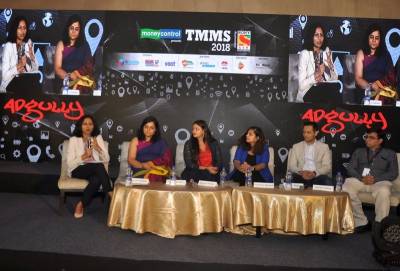


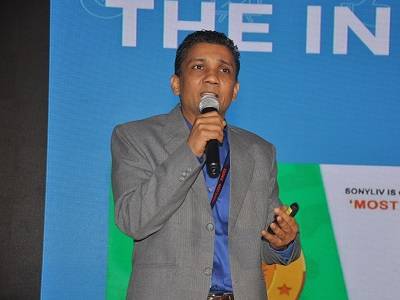
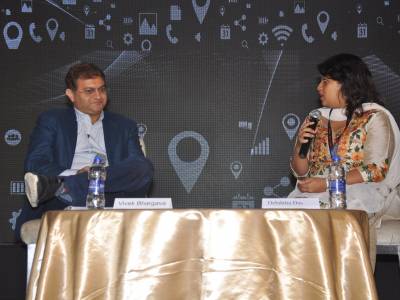
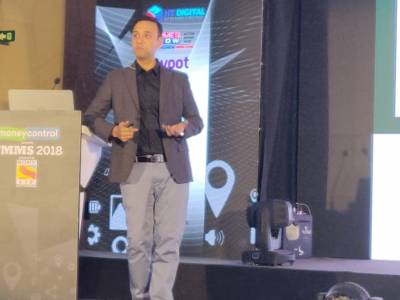
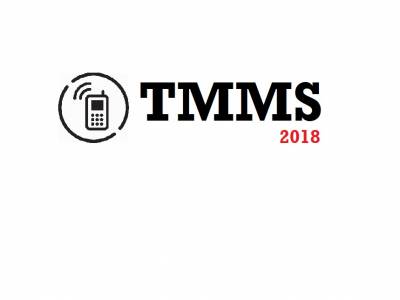



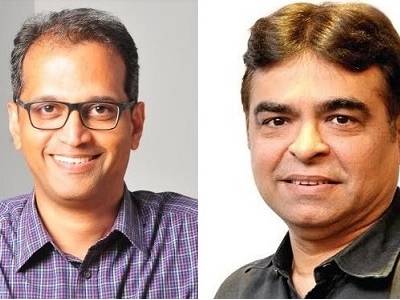




Share
Facebook
YouTube
Tweet
Twitter
LinkedIn